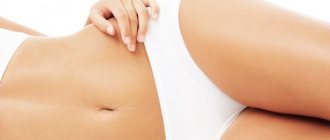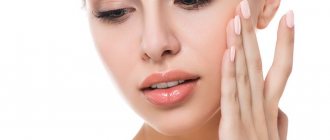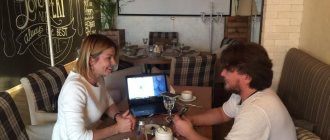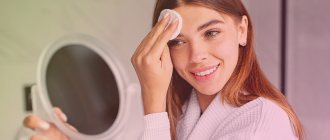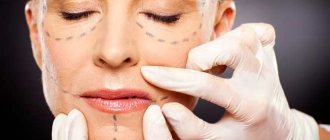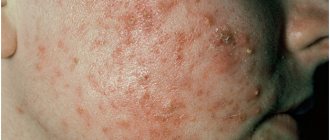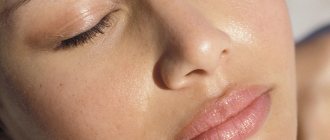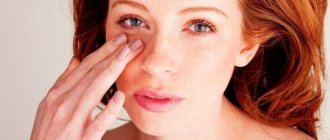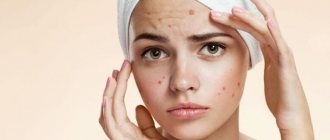Alla Kuznetsova, dermatovenerologist, cosmetologist, chief physician of the Premium Aesthetics clinic, talks about the causes, classification, pathomorphology and methods of treating stretch marks (striae).
Striae, striae distensae
(Latin: stretch marks)
, are linear dermal scars alternating with stripes of atrophy. They occur in skin that has been subjected to constant, progressive stretching. Connective tissue experiences increasing stress due to an increase in the size of various parts of the body. As a rule, stretch marks appear on the abdomen and mammary glands of pregnant women, on the shoulders of bodybuilders, in adolescents during periods of rapid growth and in obese people on almost any part of the body
Causes of stretch marks
The factors that lead to the development of striae are poorly understood.
There is no general consensus as to what causes stretch marks, but it has been suggested that stretch marks develop more easily in skin that has a high proportion of tough, cross-linked collagen, as occurs in early adult life.
Striae are a reflection of “breakdowns” in the connective tissue. Skin stretching may result in excessive degranulation of mast cells with subsequent damage to collagen and elastin (Sheu HM, Yu HS, Chang CH. Mast cell degranulation and elastolysis in the early stage of striae distensae. J Cutan Pathol. Dec 1991;18(6):410 -6)
. Long-term use of topical corticosteroids or Cushing's syndrome, associated with increased adrenocortical activity, also lead to the development of striae. Genetic factors definitely play a role, although this point is not fully understood.
How to prevent stretch marks
Despite the fact that there are no proven means to completely prevent stretch marks, a number of tips can be given that can help in this matter.
Watch your diet
As we have already said, sudden fluctuations in weight can cause stretch marks on the body. Therefore, it is important to control your eating habits and watch what you eat. Also, to maintain good body condition, it is important to eat a healthy diet. More complete instructions should be obtained from a dietitian and nutritionist.
Moisturize your skin and drink water
Water balance must be maintained for the full and healthy functioning of the body.
It is enough for an adult to drink about 35 milliliters of water per kilogram of weight. So, a person weighing 50 kg needs 1.7 liters, 60 - 2.1 liters, 70 kilograms - 2.4 liters. If you can't give up coffee, which is one of the triggers for stretch marks, combine it with drinking water, herbal teas and decaffeinated drinks. It is also worth taking care of your body skin and moisturizing it with creams and lotions.
Don't forget about vitamins
Eating foods high in vitamins not only has a positive effect on health, but also helps restore sleep. Make sure you have enough foods with vitamins C, D, E and zinc in your diet.
Striae - a cosmetic problem
In the United States, approximately 90% of pregnant women, 70% of teenage girls, and 40% of boys (especially athletes) have stretch marks, according to Medscape.com. These data can be extended to all other countries and races.
Typically, stretch marks are a cosmetic problem, but with a sudden injury or sudden overextension, first tearing, then inflammation and ulceration of the skin are possible.
Striae appear in the form of flat thinning skin of a pink hue, itching from time to time. Gradually, the stretch marks increase in length and width and become reddish-purple (striae rubra). The surface of the striae may become covered with fine wrinkles. Mature striae are white, receding, irregularly shaped stripes, parallel to the lines of skin tension along the long axis, on average several centimeters in length and 1-10 mm in width. Over time, some stretch marks may disappear or become less noticeable. The natural evolution of stretch marks is similar to the formation of scar tissue during wound healing.
During pregnancy, stretch marks usually affect the abdomen and mammary glands. The most common areas with stretch marks in adolescents are located on the outer surfaces of the thighs and lumbosacral region in boys and on the thighs, buttocks, and mammary glands in girls. Less commonly, other areas, such as the upper arms, are affected.
Striae induced by long-term use of systemic steroids are usually longer and wider than other types of stretch marks; damaged areas are also capable of expanding, involving more and more parts of the body, sometimes the face. Stretch marks may occur as a side effect of long-term use of topical corticosteroids under occlusive dressings. This kind of stretch marks occurs in places where bandages are applied and usually goes away on their own after discontinuation of local treatment.
How to deal with defects at home?
The following are recognized as effective and affordable procedures for stretch marks in the groin area:
1. Massage: daily stroking, pinching, rubbing the skin in the direction of lymph flow will quickly reduce the manifestations of the defect on the body. Using olive, sesame, soybean, wheat germ, and grape seed oils during massage manipulations will allow the skin to recover in a short time. It is more effective to use cocoa butter for rubbing into scars after a massage.
2. Shilajit cream: 1 powdered tablet is dissolved in a small spoon of water and mixed with 50 grams of baby cream. The mixture is applied to stretch marks twice a day for three months and stored in the refrigerator.
3. Compress with badyagi and hydrogen peroxide. The components are mixed to a paste consistency. Apply along massage lines to scars in the groin area. After ten minutes, wash off with water. The course of treatment includes 10 sessions.
Before pregnancy, I didn’t know what stretch marks were, I only heard about them, but after the birth of the baby, they appeared so cute.
Classification of striae
| Stage | Clinical manifestation |
| I | Fresh, inflammatory, usually purple streak |
| II-a | White, superficial striae without gradation or palpable depression on the skin surface |
| II-b | White, superficial striae without gradation, but with a palpable depression on the surface of the skin |
| III-a | White, atrophic striae with steps less than 1 cm wide, without deep dyschromia |
| III-b | White, atrophic striae with steps less than 1 cm wide, with deep dyschromia |
| IV | White, atrophic striae with gradations greater than 1 cm, with or without deep dyschromia |
Table 1. Classification of striae VAS. Adapted from M.Adatto & P. Deprez, “Combination treatment of striae,” Journal of Cosmetic Dermatology, 2004
In histological examination of immature striae, inflammatory changes predominate; swelling in the dermis is combined with the formation of accumulations of leukocytes around blood vessels. In later stages, the epidermis becomes thinner and flattens with loss of the reticulate pattern. The dermis has thin, densely packed collagen bundles in the papillary layer, located horizontally and oriented parallel to the layers of the epidermis. Broken elastin fibers curl along the sides of the striae, forming a characteristic pattern.
Electron microscopy shows extensive plexuses of convoluted elastin fibers arranged in a random pattern. This arrangement of fibers contrasts sharply with normal skin, which has thick, evenly distributed elastin fibers. When using transmission electron microscopy, elastin and collagen fibers in striae look the same as in healthy skin.
Stretch marks on the back in teenagers
Stretch marks on the back of adolescents can form during puberty, due to serious restructuring of the entire body. Growth and weight fluctuations lead to micro-tears. But there are also striae that appear as a result of the following:
- Sedentary lifestyle.
- Serious dietary errors or obesity.
- Pathological processes of the skin.
- Endocrine disorders.
- A sharp decrease in immunity.
- Excessive physical activity.
- Genetic predisposition.
- Vertebral displacement.
- Hidden pathologies of internal organs.
If parents notice other symptoms in a child besides stretch marks, then you should immediately consult a doctor. This may be high blood pressure, accompanied by heavy nosebleeds, or increased hair growth. Conventional cosmetic procedures will be ineffective here, since the cause must be sought internally.
Stretch marks can appear not only on the back, but also on the stomach
Treatment of stretch marks
In modern practice, even taking into account all the advances in dermatological pharmacology and light-based cosmetology, achieving complete restoration of skin with stretch marks remains an unattainable goal.
In some cases, preventing rapid weight gain or loss can help prevent stretch marks from appearing on the skin, especially in groups at high risk for stretch marks (teenagers and pregnant women). By the way, we must not forget that teenage stretch marks can spontaneously become almost invisible over time.
Pharmacological agents for the treatment of striae
Stretch marks can be treated with the greatest effect using pharmacological agents or physiotherapeutic procedures in the early stages. Once stretch marks mature and turn white, their treatment becomes more difficult and there are only a few methods for treating them.
An ideal drug for the treatment of stretch marks should improve skin texture and color, reconstruct collagen and promote elastin synthesis in the dermis. Topical tretinoin has shown significant improvement in the appearance of stretch mark skin, especially in the early stages of maturation. The common practice of prescribing topical retinoids to remodel and improve the appearance of hypertrophic scars, restore skin texture and elasticity, restore healthy color and reduce signs of photoaging, is also applicable to the treatment of stretch marks. The duration of use of such drugs (Avita, Retin-A, Atralin, Renova) should be at least six months.
But, attention: this treatment is absolutely contraindicated for use in pregnant and lactating women due to the potential risk of a teratogenic effect.
Intensive moisturizing of damaged skin, the use of vitamin C, retinol, fruit acids and other pharmacological agents for protection and strengthening during the treatment of the early stage of striae distensae rubra can give an excellent clinical effect and delay the maturation of striae.
Peels, mesotherapy and lasers in the treatment of stretch marks
You can improve the appearance of skin areas with striae through a course of medium chemical peels. Mesotherapy treatment with combinations of draining, remodeling and restorative drugs, carried out in courses over 6-12 months, also contributes to visible aesthetic improvement.
Therapeutic methods for treating striae include procedures using pulsed dye lasers with a wavelength of 585-596 nm. Dye lasers have been successfully used to treat enlarged blood vessels, hemangiomas and rosacea, selectively targeting hemoglobin-containing formations, including immature red striae. Even one procedure gives a pronounced aesthetic effect, and after a course of procedures you can get a measurable reduction in the depth of stretch marks and improved elasticity due to the stimulating thermal effect on collagen and elastin fibers. Usually 6-8 procedures are required with an interval of 1-1.5 months. The procedures are prescribed with caution to patients with phototype IV-V; dye lasers are not indicated for people with phototype VI.
A study conducted in Korea evaluates the effectiveness of using a 585 nm pulsed dye laser in combination with a radiofrequency procedure (Thermage®) for striae distensae. Thirty-seven patients with abdominal stretch marks were treated with Thermage and pulsed dye laser in the first session at the start of the study. Two more sessions of pulsed laser therapy were carried out after 4 and 8 weeks. Thermage was used at a flux density of 53-97 J/cm2, the parameters of pulsed laser therapy were flux density 3 J/cm2, spot size 10 mm. Skin biopsies were taken from nine patients. Subjectively, 89.2% of patients showed a “good” and “very good” overall improvement, and 59.4% showed a “very good” change in elasticity. All nine samples showed an increase in collagen fibers; an increase in elastin fibers was found in six samples. The authors report that Thermage and pulsed dye laser, in combination, are an effective treatment for striae distensae. (Suh DH, Chang KY, Son HC, Ryu JH, Lee SJ, Song KY. Radiofrequency and 585-nm pulsed dye laser treatment of striae distensae: a report of 37 Asian patients. Dermatol Surg. Jan 2007;33(1): 29-34)
Fractional photothermolysis in the treatment of striae
The primacy in the therapeutic apparatus treatment of mature striae (striae alba) belongs to fractional photothermolysis using a laser with a wavelength of 1550 nm. This method is universal, indicated for almost all categories of patients of both sexes, any age and phototype, and does not require medical rehabilitation after the procedure. Having the collagen and elastin of the dermis as the point of application of the greatest impact, the laser, through strictly dosed damage, causes subsequent replacement and restoration of the structure of the damaged area of the skin. Typically, stretch marks are treated with 20% -23% coverage and energy 30-35 mJ/cm2 4-6 times with a break of 1 -1.5 months. There are virtually no risks of infection or post-inflammatory hyperpigmentation.
More aggressive laser treatments performed by fractional ablative CO2 lasers provide good aesthetic and clinical results after 1-2 treatments, but require more extensive anesthesia and medical care during the recovery period than the previous method. The AcuPulse® CO2 laser therapy device is equipped with a combined program for treating skin with stretch marks. The combination of deep and superficial treatment in modes of different aggressiveness allows you to simultaneously influence both the elastic structures of the dermis and the folds and pigment of the epidermis. The skin after such treatment will need high-quality protection from UV radiation for several months.
All of the above methods for treating stretch marks are presented in order from less aggressive and accessible to more complex, active and expensive. If we talk about a radical (but also the most expensive) way to solve the complex problem of stretch marks and excess skin, in the abdominal area, for example, then the optimal choice for it may be the choice of plastic surgery of the anterior abdominal wall, namely the removal of the skin-fat fold. After the recovery period, the resulting aesthetic effect of a correctly performed operation significantly exceeds the effects of therapeutic methods.
Is it possible to get rid of them?
It is impossible to permanently remove stretch marks from the body: as we have already said, these are scars, not temporary changes on the skin. You need to come to terms with this fact and understand that the nature of the human body does not always throw up pleasant surprises. However, special treatment may bear fruit.
You should visit your doctor before taking any action, especially if you are pregnant or breastfeeding. Some medications contain retinol, which can be dangerous for your baby.
For treatment to produce results, it is necessary to use proven and effective gels, creams and lotions. They should only be used in the early stages of stretch marks; the products will not have any effect on mature scars. It is imperative to rub in the products every day to achieve at least minimal positive changes.
Experts from the American Academy of Dermatologists emphasize that home treatments will not help with stretch marks. They cite studies that found that after regular massages with almond, olive or cocoa butter, vitamin E, not a single stretch mark on the body of the subjects disappeared. Tanning also does not help in the fight: when you sunbathe, stretch marks do not acquire a uniform shade with the rest of the skin - they do not tan at all. This makes the stripes even more noticeable.
A study published in The Journal of the European Academy of Dermatology and Venereology suggests that the most effective creams in the fight against stretch marks were Alphastria and Trofolastin, as well as substances with tretinoin, retinol and hyaluronic acid.
In addition, there are aesthetic procedures performed by dermatologists. Among them are laser therapy, chemical peeling, and diamond microdermabrasion.
